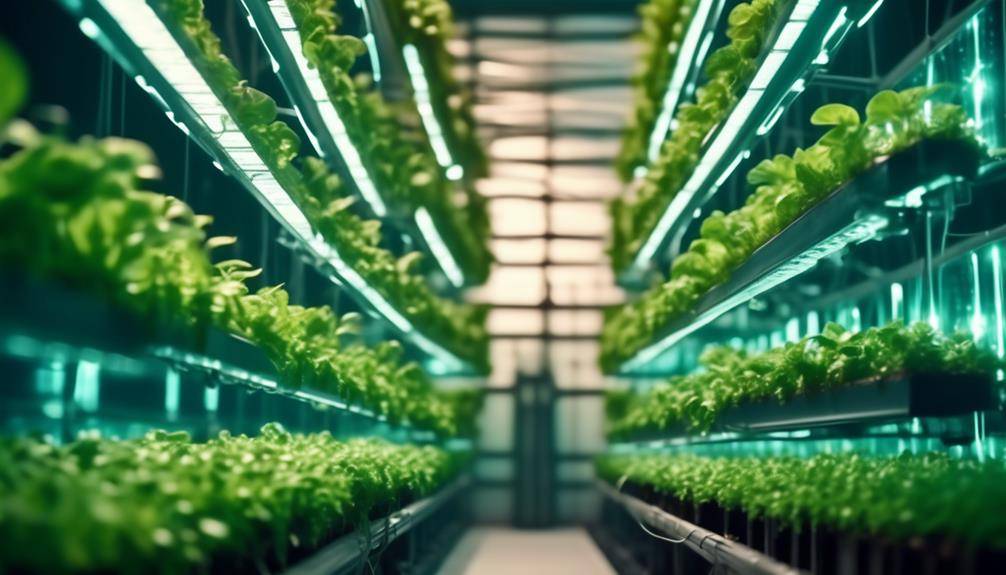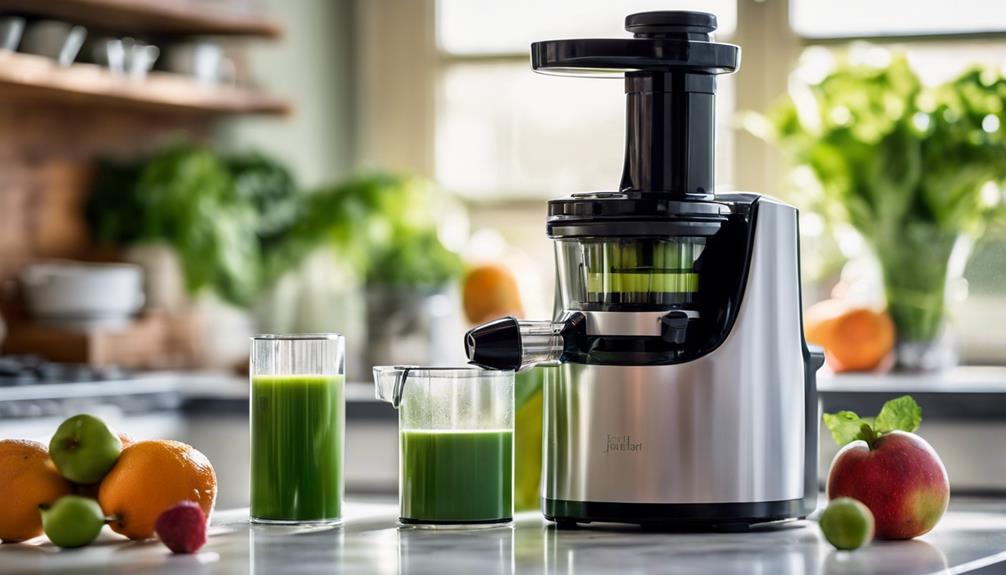What Is The Future Of Farming With Hydroponics

The Future Of Farming With Hydroponics; Imagine a world where fresh, nutritious produce can be grown year-round, regardless of the weather conditions or geographical limitations. Well, that world is not as far-fetched as it may seem. The future of farming lies in the realm of hydroponics, a soilless cultivation method that is revolutionizing the agricultural industry.
With hydroponics, farmers can grow crops using only water and nutrient solutions, eliminating the need for soil altogether. But the benefits of this innovative technique don’t stop there. From increased crop yields to efficient space utilization, hydroponics has the potential to transform the way we grow food. So, how exactly does hydroponics work, and what does the future hold for this groundbreaking farming method? Let’s explore further.
Advantages of Hydroponics
What are the advantages of using hydroponics in farming? Hydroponics offers numerous advantages that make it an attractive option for the future of farming. One of the key benefits is its ability to maximize crop yield. By providing plants with a precisely controlled environment, hydroponics allows for optimal growth conditions, resulting in higher yields compared to traditional soil-based methods. This is particularly important in areas with limited arable land, as hydroponics enables the cultivation of crops in smaller spaces.
Another advantage of hydroponics is its efficient use of resources. Unlike conventional farming, which requires large amounts of water and fertilizers, hydroponics uses water more efficiently and reduces the need for chemical inputs. By delivering nutrients directly to the plant’s roots, hydroponics minimizes wastage and ensures that plants receive exactly what they need to thrive. This not only reduces the environmental impact of agriculture but also makes hydroponics a more sustainable and cost-effective option in the long run.
Furthermore, hydroponics offers greater control over plant growth, allowing farmers to optimize conditions for specific crops. By adjusting factors such as temperature, humidity, and nutrient levels, growers can tailor the growing environment to meet the unique requirements of each plant. This precision cultivation not only enhances crop quality but also minimizes the risk of pests, diseases, and weeds, reducing the need for pesticides and herbicides.
Looking ahead, future innovations in hydroponics hold even more promise. Advancements in technology, such as automated monitoring systems and smart sensors, will further enhance the efficiency and productivity of hydroponic farming. Additionally, research into alternative growing mediums and nutrient solutions may lead to even more sustainable and resource-efficient systems.
Increased Crop Yields
To further optimize crop yield and maximize the potential of hydroponic farming, advancements in technology and innovative techniques are being explored. By employing these methods, farmers can achieve increased crop yields that are not possible with traditional soil-based farming.
Here are three ways in which hydroponics can help maximize nutrient uptake and automate the farming process:
- Precision Nutrient Delivery: Hydroponic systems allow for precise control over the nutrient levels and pH balance of the nutrient solution. This ensures that plants receive the optimal amount of nutrients they need at each growth stage. By fine-tuning the nutrient solution, farmers can maximize nutrient uptake and promote healthy growth, resulting in higher crop yields.
- Automated Monitoring and Control: Automation plays a crucial role in hydroponic farming. Through the use of sensors and smart controllers, farmers can monitor important environmental factors such as temperature, humidity, and nutrient levels in real-time. Automated systems can adjust these parameters accordingly, ensuring that plants are provided with the most favorable growing conditions. This not only saves time and effort but also minimizes the risk of human error, leading to consistent and optimal crop yields.
- Vertical Farming: Hydroponic systems are particularly well-suited for vertical farming, where plants are stacked in vertical towers or shelves. This innovative approach maximizes space utilization, allowing for higher crop densities and increased production per square foot. Additionally, vertical farming reduces the need for large land areas, making it an ideal solution for urban areas with limited space for traditional farming.
Water Conservation Techniques
One effective water conservation technique in hydroponic farming is the implementation of recirculating systems. These systems are designed to minimize water waste by continuously reusing the nutrient solution. By recirculating the nutrient-rich water, hydroponic farmers can significantly reduce their water consumption compared to traditional soil-based farming methods.
Another water conservation technique commonly used in hydroponics is the utilization of drip irrigation methods. Drip irrigation delivers water directly to the plant’s root zone, minimizing evaporation and ensuring that the plants receive the precise amount of water they need. This targeted approach not only conserves water but also reduces the risk of overwatering, which can lead to nutrient leaching and plant diseases.
Furthermore, hydroponic farming itself is a soilless farming technique that inherently promotes water conservation. Unlike traditional farming, which requires extensive amounts of water to maintain soil moisture levels, hydroponics eliminates the need for soil altogether. Instead, plants are grown in a nutrient-rich water solution, which can be easily controlled and recycled, minimizing water waste.
Innovative technologies such as sensor-based irrigation systems and automated water management systems are also being incorporated into hydroponic farming to optimize water usage. These systems monitor plant water requirements in real-time and deliver water precisely when and where it is needed, further reducing water consumption.
Nutrient Management in Hydroponics
Implementing effective nutrient management strategies is crucial in hydroponic farming to ensure optimal plant growth and maximize crop yields. Nutrient optimization plays a vital role in this process, as it involves maintaining the proper balance of essential elements in the nutrient solution to meet the specific needs of each plant. To achieve this, careful nutrient solution formulation is necessary, considering factors such as plant species, growth stage, and environmental conditions. Here are three key points to consider when managing nutrients in hydroponics:
- Balanced Nutrient Ratios: Each plant requires a specific ratio of nutrients for healthy growth. By understanding the nutritional requirements of different crops, you can tailor the nutrient solution to provide the optimal balance. This involves adjusting the concentrations of macronutrients (such as nitrogen, phosphorus, and potassium) and micronutrients (such as iron, zinc, and manganese) to meet the plant’s needs at different growth stages.
- pH Regulation: Maintaining the correct pH level of the nutrient solution is crucial for nutrient availability and uptake by the plants. Different crops have varying pH preferences, and deviations from the optimal range can lead to nutrient deficiencies or toxicities. Regular monitoring and adjustment of pH levels are essential to ensure that plants can absorb the nutrients efficiently.
- Monitoring and Adjusting: Continuous monitoring of nutrient levels in the solution and plant tissue is essential to identify any deficiencies or imbalances. Regular testing enables you to make timely adjustments and prevent nutrient-related problems. It is also important to consider factors like water quality and temperature, as they can affect nutrient availability and uptake.
Efficient Space Utilization
Efficient space utilization is a crucial aspect of hydroponics, as it allows for maximum crop yield in limited areas. Vertical farming, one of the key techniques in hydroponics, offers numerous benefits in terms of space optimization. By stacking plants vertically, growers can make the most of available space, effectively increasing the number of plants that can be grown in a given area. This innovative approach to farming not only maximizes productivity but also opens up possibilities for urban agriculture and reduces the environmental footprint of traditional farming methods.
Vertical Farming Benefits
To maximize the utilization of limited space, vertical farming offers a groundbreaking solution for efficient agricultural production. This innovative farming method involves growing crops in vertically stacked layers, allowing for multiple levels of cultivation within a compact area. Here are three key benefits of vertical farming in terms of efficient space utilization:
- Increased Nutritional Value: Vertical farming enables farmers to closely monitor and control the growing conditions, resulting in crops that are packed with nutrients. With precise control over factors such as temperature, light, and nutrient levels, vertical farms can produce crops that have higher levels of vitamins, minerals, and antioxidants.
- Reduced Pesticide Use: Vertical farming systems employ advanced technologies such as hydroponics or aeroponics, which eliminate the need for soil and greatly reduce the risk of pests and diseases. This reduces the reliance on harmful pesticides, making vertical farming a more sustainable and eco-friendly option.
- Maximizing Land Efficiency: By utilizing vertical space, vertical farms can produce significantly higher yields per square foot compared to traditional farming methods. This efficient use of space allows for the cultivation of crops in urban areas, reducing the need for transportation and minimizing the carbon footprint associated with long-distance food supply chains.
Maximizing Crop Yield
With the efficiency of vertical farming in terms of space utilization established, the focus now shifts towards maximizing crop yield through innovative methods. One such method is the implementation of smart automation technology. By using sensors, artificial intelligence, and data analysis, farmers can monitor and adjust environmental conditions in real-time. This ensures that crops receive optimal levels of light, temperature, humidity, and nutrient solutions, leading to improved growth rates and higher yields.
Additionally, smart automation allows for precise control over irrigation and fertilization, minimizing waste and maximizing resource efficiency. Another approach to maximizing crop yield is through crop quality optimization. This involves selecting the most suitable plant varieties, optimizing nutrient formulations, and managing pests and diseases effectively. By combining smart automation with crop quality optimization techniques, hydroponic farmers can achieve higher crop yields while maintaining the highest standards of quality.
Pest and Disease Control Methods
When it comes to pest and disease control in hydroponics, there are several innovative methods to consider. Integrated Pest Management (IPM) is a holistic approach that combines cultural, biological, and chemical control methods to manage pests effectively. Biological control agents, such as beneficial insects and nematodes, can be introduced to the hydroponic system to prey on or parasitize pests. Additionally, farmers can choose disease-resistant crop varieties to minimize the risk of plant infections. By implementing these techniques, hydroponic farmers can maintain a healthy and pest-free environment for their crops.
Integrated Pest Management
Integrated Pest Management (IPM) revolutionizes the way pests and diseases are controlled in hydroponic farming by employing a comprehensive and proactive approach that maximizes efficiency and minimizes environmental impact. IPM focuses on sustainable farming practices that prioritize the use of biological control methods, cultural practices, and targeted pesticide applications. Here are three key elements of IPM in hydroponics:
- Biological Control: IPM promotes the use of beneficial insects, such as ladybugs and predatory mites, to naturally control pest populations. These insects feed on pests, reducing the need for chemical pesticides.
- Cultural Practices: IPM encourages farmers to implement practices like crop rotation, sanitation, and proper plant spacing. These practices create unfavorable conditions for pests and diseases, limiting their spread and impact.
- Targeted Pesticide Applications: When necessary, IPM advocates for the use of selective and low-toxicity pesticides. These pesticides are applied only when pests reach a certain threshold, minimizing their impact on beneficial organisms and the environment.
Biological Control Agents
To further enhance the effectiveness of Integrated Pest Management in hydroponic farming, the implementation of biological control agents is crucial for controlling pests and diseases. Biological control methods involve the use of living organisms to reduce the population of harmful pests and diseases. These organisms are natural enemies of pests, such as parasitoids, predators, and pathogens. By introducing these biological control agents into the hydroponic system, organic farming techniques can be employed to minimize the use of chemical pesticides and promote a more sustainable approach to pest management.
The use of biological control agents offers several advantages, including reduced environmental impact, improved crop quality, and increased overall plant health. Furthermore, these agents can be tailored to specific pests and diseases, ensuring targeted control measures and minimizing non-target effects on beneficial organisms. Incorporating biological control agents into hydroponic farming systems is a promising strategy for achieving effective pest and disease control while maintaining the principles of organic farming.
Disease-Resistant Crop Varieties
Disease-resistant crop varieties are a fundamental component of pest and disease control methods in hydroponic farming. As hydroponic farming techniques continue to evolve, the development of disease-resistant crop varieties has become increasingly important. Here are three reasons why disease-resistant crop varieties are crucial in hydroponic farming:
- Enhanced crop protection: Disease-resistant crop varieties are bred to withstand specific pathogens, reducing the risk of crop losses due to diseases. This allows farmers to maintain healthier and more productive plants.
- Reduced pesticide use: By incorporating disease-resistant crop varieties, farmers can minimize the need for chemical pesticides. This not only reduces the environmental impact but also contributes to the production of cleaner and safer crops.
- Improved sustainability: Disease-resistant crop varieties promote sustainable farming practices by reducing the reliance on synthetic chemicals. This helps protect the ecosystem and ensures the long-term viability of hydroponic farming.
Hydroponic Systems: Types and Variations
In the world of hydroponics, a wide array of innovative and research-oriented systems exist, each offering unique variations and possibilities for cultivating plants without soil. One such system is the Nutrient Film Technique (NFT), which has several advantages over traditional farming methods.
Compared to traditional farming, NFT systems provide precise control over nutrient delivery to plants. In hydroponics, essential nutrients are dissolved in water and delivered directly to the plant roots, ensuring that they receive the optimal amount of nutrients at all times. This targeted approach eliminates the need for excessive fertilizer use, reducing the risk of nutrient runoff and environmental pollution. Additionally, NFT systems allow for the recycling of nutrient solutions, minimizing waste and conserving resources.
Another advantage of NFT systems is their efficient use of space. Hydroponics eliminates the need for soil, allowing plants to be grown vertically or in closely spaced rows. This vertical farming technique maximizes the use of available space, making it possible to cultivate a larger number of plants in a smaller area. Vertical farming also reduces the need for large land areas, making hydroponics a suitable option for urban farming and areas with limited arable land.
Furthermore, NFT systems offer a higher level of control over environmental factors such as temperature, humidity, and lighting. By providing optimal conditions, hydroponics enables plants to grow faster and produce higher yields compared to traditional farming methods. This level of control also allows for year-round cultivation, eliminating the limitations imposed by seasonal changes and climate variations.
The Role of Technology in Hydroponics
Technology plays a pivotal role in revolutionizing the field of hydroponics, enhancing the precision, efficiency, and sustainability of plant cultivation without soil. With continuous advancements in technology, hydroponic systems have become more sophisticated and efficient, allowing growers to optimize their operations and achieve higher yields. The integration of automation in hydroponics has further transformed the industry, streamlining processes and reducing labor-intensive tasks.
Here are three key ways in which technology advancements and automation integration have revolutionized hydroponics:
- Precision Monitoring and Control: Technology has enabled growers to monitor and control various environmental factors such as temperature, humidity, nutrient levels, and pH in real-time. Sensors and data analytics allow for precise adjustments, ensuring optimal growing conditions and maximizing plant growth. Automated systems can automatically regulate these factors, minimizing human error and ensuring consistency.
- Efficient Resource Management: Technology has made it possible to monitor and optimize resource usage, such as water and nutrients. Advanced irrigation systems, such as drip irrigation or fogging systems, deliver precise amounts of water directly to the plant roots, minimizing waste. Nutrient solutions can be precisely mixed and delivered to plants, ensuring they receive the exact nutrients they need for healthy growth. This efficient resource management reduces costs and environmental impact.
- Remote Monitoring and Management: Technology allows growers to remotely monitor and manage their hydroponic systems, enabling them to access real-time data and make informed decisions from anywhere. Remote monitoring systems provide alerts for any anomalies or issues, allowing for quick intervention. This remote accessibility improves efficiency and flexibility, as growers can respond promptly to changes or emergencies.
As technology continues to advance, hydroponics will undoubtedly benefit from further automation integration. The future holds exciting possibilities, with the potential for robotic systems that can perform tasks such as seeding, harvesting, and maintenance. These advancements will not only increase efficiency but also make hydroponics more accessible and sustainable, paving the way for a more efficient and environmentally friendly future of farming.
Sustainability and Environmental Benefits
Advancements in hydroponic technology have not only revolutionized the precision and efficiency of plant cultivation but have also brought about significant sustainability and environmental benefits. Hydroponics offers a more sustainable approach to farming by reducing water usage, minimizing chemical inputs, and mitigating the negative impacts of traditional agriculture on the environment.
One of the key aspects of hydroponics that contributes to its sustainability is its efficient use of water. Traditional farming methods rely heavily on irrigation, resulting in significant water wastage due to evaporation and runoff. In contrast, hydroponics uses a closed-loop system where water is recirculated, minimizing water loss. This approach can reduce water usage by up to 90% compared to traditional soil-based agriculture, making hydroponics an ideal choice for regions facing water scarcity or drought conditions.
Furthermore, hydroponics promotes sustainable farming practices by significantly reducing the need for chemical inputs such as pesticides and fertilizers. By eliminating soil as the growing medium and providing plants with a nutrient-rich solution directly, hydroponics eliminates the risk of soil-borne diseases and pests. Consequently, farmers can reduce or even eliminate the use of chemical pesticides, minimizing the environmental impact associated with their application.
To fully assess the environmental benefits of hydroponics, an environmental impact assessment is crucial. Such assessments evaluate the potential environmental consequences of a particular activity and help identify areas for improvement. By conducting an environmental impact assessment, farmers can ensure that their hydroponic systems are designed and operated in a manner that maximizes sustainability and minimizes negative environmental effects.
Economic Viability of Hydroponics
The economic viability of hydroponics can be evaluated through a thorough analysis of its cost-effectiveness and potential profitability. As with any agricultural system, hydroponics faces certain economic challenges that need to be considered. However, the growing market demand for fresh and sustainable produce presents opportunities for hydroponic farmers to thrive.
Here are three key factors to consider when assessing the economic viability of hydroponics:
- Cost-effectiveness: Hydroponics can be initially expensive to set up due to the need for specialized equipment and infrastructure. However, over time, the system can prove to be cost-effective. By providing precise control over nutrient delivery and optimizing water usage, hydroponics can reduce the overall input costs associated with traditional farming methods.
- Profitability: The potential profitability of hydroponics can be attributed to several factors. Firstly, the ability to grow crops in controlled environments allows for year-round production, eliminating the limitations imposed by seasonal changes. Additionally, hydroponics enables higher crop yields and faster growth rates, leading to increased production and potentially higher profits.
- Market demand: The increasing consumer demand for fresh and locally grown produce presents a significant opportunity for hydroponic farmers. With the ability to grow crops in urban areas or regions with limited arable land, hydroponics can provide a consistent supply of fresh produce, meeting the demands of local markets. Furthermore, the growing interest in sustainable and environmentally friendly farming practices enhances the market appeal of hydroponically grown products.
Hydroponics in Urban Farming
Urban farming faces a unique challenge: limited space. However, hydroponics offers a solution by utilizing vertical farming techniques. By growing plants vertically, hydroponics maximizes space efficiency, allowing for higher crop yields in urban environments. This innovative approach to urban farming not only addresses the issue of limited space but also offers the potential for sustainable and self-sufficient food production in densely populated areas.
Urban Space Limitations
With limited space available in densely populated urban areas, hydroponics provides an innovative solution for cultivating crops efficiently and sustainably. Urban space limitations have led to the development of high rise hydroponics and rooftop farming, which maximize the use of vertical space. Here are three key advantages of hydroponics in urban farming:
- Space efficiency: Hydroponic systems require significantly less space compared to traditional soil-based farming methods. By utilizing vertical farming techniques, multiple layers of crops can be grown in a compact area, allowing for higher yields per square foot.
- Resource conservation: Hydroponics uses up to 90% less water compared to conventional farming, making it a sustainable choice for urban environments where water scarcity is a concern. Additionally, the controlled environment of hydroponic systems reduces the need for pesticides and herbicides, minimizing chemical runoff and protecting the surrounding ecosystem.
- Year-round production: Hydroponics enables farmers to grow crops year-round, regardless of seasonal limitations. Controlled environments provide optimal conditions for plant growth, allowing for continuous harvests and a consistent supply of fresh produce to meet the demands of urban populations.
Vertical Farming Benefits
To fully explore the benefits of hydroponics in urban farming, let’s now delve into the advantages of vertical farming. Vertical farming, a form of indoor farming that utilizes stacked layers of plants, offers a solution to the limited space in urban areas. One of the primary challenges of urban farming is the scarcity of available land. Vertical farming addresses this issue by utilizing vertical space, maximizing the productivity in a limited footprint.
This innovative farming method allows for the cultivation of crops in multi-story buildings or specially designed structures. Furthermore, vertical farming can play a crucial role in developing countries where arable land is scarce. By implementing hydroponics in vertical farming systems, these countries can overcome the challenges associated with traditional agriculture and ensure a sustainable food supply for their growing populations.
Vertical Farming With Hydroponics
Vertical farming, utilizing hydroponic systems, revolutionizes traditional agriculture by maximizing space efficiency and optimizing crop production. This innovative approach to farming involves growing plants in vertically stacked layers, allowing for the cultivation of a large number of crops in a smaller footprint compared to traditional farming methods. With the use of hydroponic nutrients, vertical farming provides plants with the necessary elements for growth without the need for soil.
Here are three key benefits of vertical farming with hydroponics:
- Space optimization: Vertical gardening allows for the efficient use of space, making it possible to grow crops in urban areas where land is limited. By utilizing vertical space, farmers can produce more food in a smaller area, reducing the need for extensive land use.
- Increased crop yields: Hydroponic systems provide plants with precisely balanced nutrient solutions, ensuring optimal growth and development. This controlled environment allows for year-round cultivation, eliminating the constraints of seasonal changes. As a result, vertical farming can achieve higher crop yields compared to traditional farming methods.
- Water and resource conservation: Hydroponic systems use significantly less water compared to conventional farming practices. The closed-loop system recirculates water, minimizing waste and reducing the overall water consumption. Additionally, vertical farming eliminates the need for pesticides and herbicides, reducing chemical usage and environmental contamination.
Vertical farming with hydroponics presents a promising future for sustainable agriculture. By maximizing space utilization, optimizing crop production, and conserving resources, this innovative farming method offers a viable solution to the challenges of traditional agriculture. With further advancements in technology and research, vertical farming has the potential to revolutionize food production and contribute to a more sustainable and resilient food system.
Hydroponics and Food Security
Hydroponics, a cutting-edge agricultural technique, plays a crucial role in ensuring food security by providing a sustainable and efficient means of crop production. With the world’s population projected to reach 9.7 billion by 2050, it is imperative to find innovative solutions to meet the increasing demand for food. Hydroponics offers a promising solution by maximizing food production efficiency and engaging local communities.
One of the key advantages of hydroponics is its ability to produce higher yields compared to traditional soil-based farming. By providing plants with precise amounts of nutrients and water, hydroponic systems create optimized growing conditions that enhance plant growth and productivity. This increased efficiency translates into a higher food production capacity within a limited space. For example, vertical hydroponic farms can produce up to 20 times more crops per square foot compared to traditional farming methods. This increased productivity allows for a more sustainable and reliable food supply.
Another important aspect of hydroponics is its potential for community engagement. Hydroponic farms can be established in urban areas, bringing food production closer to consumers. This not only reduces the carbon footprint associated with transportation but also promotes a sense of ownership and involvement within the community. Community members can actively participate in the growing process, learning about sustainable agriculture and gaining a deeper appreciation for where their food comes from. By bridging the gap between consumers and producers, hydroponics fosters a stronger connection to food and encourages healthier eating habits.
Case Studies: Successful Hydroponic Farms
With the increasing demand for sustainable and efficient farming methods, it is important to examine successful case studies of hydroponic farms that have demonstrated the potential of this innovative agricultural technique. Hydroponic farming techniques have gained significant attention for their ability to produce high yields of crops in controlled environments, using less water and land compared to traditional farming methods. Here are three case studies of successful hydroponic farms that showcase the benefits and possibilities of this farming approach:
- Gotham Greens: Based in New York City, Gotham Greens is a leading hydroponic farming company that has successfully implemented their innovative farming techniques in urban environments. By utilizing vertical farming systems, they are able to produce a large variety of fresh, pesticide-free greens year-round. Their hydroponic systems allow for precise control over nutrient and water delivery, resulting in faster growth rates and higher crop yields.
- BrightFarms: BrightFarms is another successful hydroponic farming company operating in the United States. They specialize in producing locally-grown salad greens and herbs for supermarkets. By growing their crops in hydroponic greenhouses near urban centers, they reduce transportation costs and carbon emissions associated with long-distance farming. Additionally, their closed-loop water circulation systems minimize water waste and provide optimal conditions for plant growth.
- Vertical Harvest: Located in Wyoming, Vertical Harvest is a unique hydroponic farm that has been designed to maximize production in a limited space. Their three-story greenhouse utilizes vertical farming techniques to grow a variety of crops, including lettuce, herbs, and microgreens. By stacking layers of plants vertically, they are able to produce a substantial amount of food in a small footprint, making it an ideal solution for urban areas with limited land availability.
These successful hydroponic farms demonstrate the potential of this innovative farming technique to address the challenges of food production in a resource-efficient and sustainable way. By adopting hydroponic farming methods, farmers can optimize crop growth, reduce water usage, and increase yields, ultimately contributing to a more secure and resilient food system.
Future Innovations in Hydroponics
As hydroponics continues to evolve, researchers and innovators are exploring new methods and technologies to further enhance the efficiency and sustainability of this groundbreaking farming technique. One of the key areas of focus for future innovation in hydroponics is automation. By automating various tasks in the hydroponic system, farmers can significantly reduce labor costs and improve overall productivity.
Future automation in hydroponics involves the use of advanced sensors, robotics, and artificial intelligence (AI) to monitor and control various aspects of the farming process. For example, sensors can be used to measure and adjust nutrient levels, pH levels, temperature, and humidity in real-time, ensuring optimal growing conditions for the plants. Robots can be programmed to perform tasks such as seeding, transplanting, and harvesting, reducing the need for manual labor.
Hydroponic research is also focused on developing innovative growing techniques to maximize crop yields and minimize resource consumption. One area of research is vertical farming, where plants are grown in stacked layers to make efficient use of space. Another area of interest is nutrient delivery systems, where scientists are exploring new methods of delivering nutrients directly to the plant roots, improving nutrient uptake and minimizing waste.
Additionally, researchers are studying the use of alternative energy sources, such as solar power, to further enhance the sustainability of hydroponic farming. Solar panels can be used to generate electricity for powering pumps, lighting systems, and other equipment, reducing reliance on traditional energy sources.
The Future Of Farming With Hydroponics; Frequently Asked Questions
What Are the Potential Health Risks Associated With Consuming Hydroponically Grown Crops?
You should be aware of potential health risks associated with consuming hydroponically grown crops. While nutrient content can be carefully controlled, there is a risk of contamination from pathogens or chemicals if proper sanitation practices are not followed.
How Does Hydroponics Compare to Traditional Soil-Based Farming in Terms of Taste and Flavor of the Produce?
When it comes to taste comparison, hydroponics offers a unique advantage over traditional soil-based farming. The controlled environment allows for precise nutrient delivery, resulting in enhanced flavor and nutritional benefits in the produce.
Are There Any Limitations or Challenges in Growing Certain Types of Crops Using Hydroponic Systems?
When growing crops in hydroponic systems, you may encounter limitations and challenges. Certain types of crops may not thrive as well due to the specific nutrient requirements or the absence of soil. It requires careful planning and adjustments to optimize growth.
What Are the Energy Requirements and Costs Associated With Running a Hydroponic Farm?
To assess the energy requirements and costs of running a hydroponic farm, focus on energy efficiency and economic viability. By employing innovative techniques, you can optimize energy consumption and make hydroponics economically sustainable for the future of farming.
What Are the Main Factors That Determine the Shelf Life and Storage of Hydroponically Grown Crops?
Factors affecting the shelf life and storage of hydroponically grown crops include temperature, humidity, light exposure, and proper packaging. Controlling these conditions can maximize freshness and prevent spoilage, ensuring longer storage and better quality produce.
Conclusion
In conclusion, hydroponics presents a promising future for farming. With its numerous advantages such as increased crop yields, water conservation techniques, and efficient space utilization, it offers a sustainable solution to global food security challenges. The success of hydroponic farms in various case studies further demonstrates its potential. As future innovations continue to emerge in this field, the world can look forward to even more efficient and innovative hydroponic farming techniques that will revolutionize the agriculture industry.








